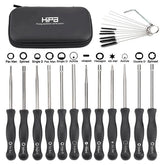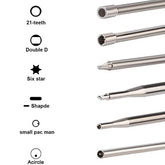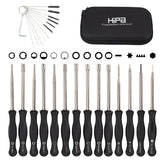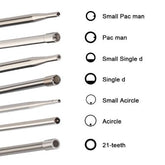Flywheel Magnet Failure 101: How to Fix Detached Magnets & Proper Polarity Alignment
If you've ever heard a sudden rattling noise from your small engine (like a lawn mower or chainsaw) followed by a loss of power, chances are a flywheel magnet has broken loose. This guide will walk you through fixing detached magnets and explain why proper polarity alignment matters—whether you're dealing with a 2-pole or 4-pole flywheel.
Part 1: What to Do When a Flywheel Magnet Detaches
Step 1: Diagnose the Problem
Signs: Engine misfires or refuses to start. Noticeable fractures or spaces in the flywheel's magnetic ring.

Metal shavings near the flywheel (from magnet rubbing against the coil).
Tools Needed: Socket wrench, flashlight, gloves.
Step 2: Temporary Fix (For Emergency Use Only!)
Epoxy Rescue:
Clean the detached magnet and flywheel surface with isopropyl alcohol.
Use high-temperature epoxy (e.g., JB Weld) to reattach the magnet.
Clamp the magnet in place for 24 hours.
⚠️ This is a short-term fix! Epoxy may fail under high RPM or heat.
Step 3: Permanent Repair
Replace the Flywheel or Magnet Ring:
For OEM parts, match the model number (e.g., Briggs & Stratton 793880).
Aftermarket kits are cost-effective alternatives but check with the merchant to confirm the compatiblily before purchasing.
Part 2: Proper Magnet Polarity Alignment
Magnet polarity alignment is critical for generating the electromagnetic pulses that power your ignition system. Here's how to get it right:
Case 1: 2-Pole Flywheel Magnets
Correct Arrangement:
Two magnets placed 180° apart, with opposite poles facing outward (N-S).
Example: A Briggs & Stratton flywheel with one North pole and one South pole.
2-Pole Alignment
Why It Matters: Generates one strong pulse per rotation to trigger the ignition coil.
Ensures consistent timing for spark plug firing.
Common Mistakes:
Installing both magnets with the same polarity → No voltage pulse, engine won't start.
Uneven spacing → Weak or erratic sparks.
Case 2: 4-Pole (or Multi-Pole) Flywheel Magnets
Correct Arrangement:
Magnets alternate N-S-N-S around the flywheel (every 90° for a 4-pole design).
Example: Honda GCV160 flywheels for high-RPM engines.
Magnets alternate N-S-N-S around the flywheel (every 90°for a 4-pole design).

Example: Honda GCV160 flywheels for high-RPM engines.
4-Pole Alignment
Why It Matters: Produces two pulses per rotation, improving timing accuracy for electronic ignition systems. Balances magnetic forces, reducing flywheel vibration.
Common Mistakes:
N-S-S-N arrangement → Creates uneven pulses and weak sparks
Mixing magnet strengths → Inconsistent coil charging. Bad 4-Pole
Part 3: The Science Behind Polarity & Ignition
Faraday's Law in Action:
A magnet passing a coil induces voltage. Alternating poles (N-S-N-S) maximize the rate of magnetic flux change, creating stronger pulses.
Consequences of Poor Alignment:
2-Pole Systems: Single misaligned magnet = no spark.
4-Pole Systems: Adjacent same poles (e.g., S-S) cancel flux changes → weak/missing pulses.
Pro Tips
Test Before Reassembly:
Use a Gauss meter to verify polarity and strength.
Spin the flywheel by hand near the coil – a working system should spark.
Avoid Heat Damage:
Never weld near the flywheel – heat demagnetizes the magnets!
Final Thoughts
A loose flywheel magnet isn't just an annoyance—it's a recipe for engine failure. By fixing detached magnets properly and respecting polarity rules, you'll keep small engines running smoothly. Remember: when in doubt, match the original manufacturer's design!
Disclaimer
This blog shares my personal experience and does not guarantee results. Modifying your carburetor may void warranties or cause damage if not done correctly. Proceed at your own risk and consider consulting a professional if you're unsure about any steps.
We'd like to invite you to join HIPA DIY COMMUNITY to feature your passion for repair projects, share your stories with the Hipa family and get help from Hipa.






















